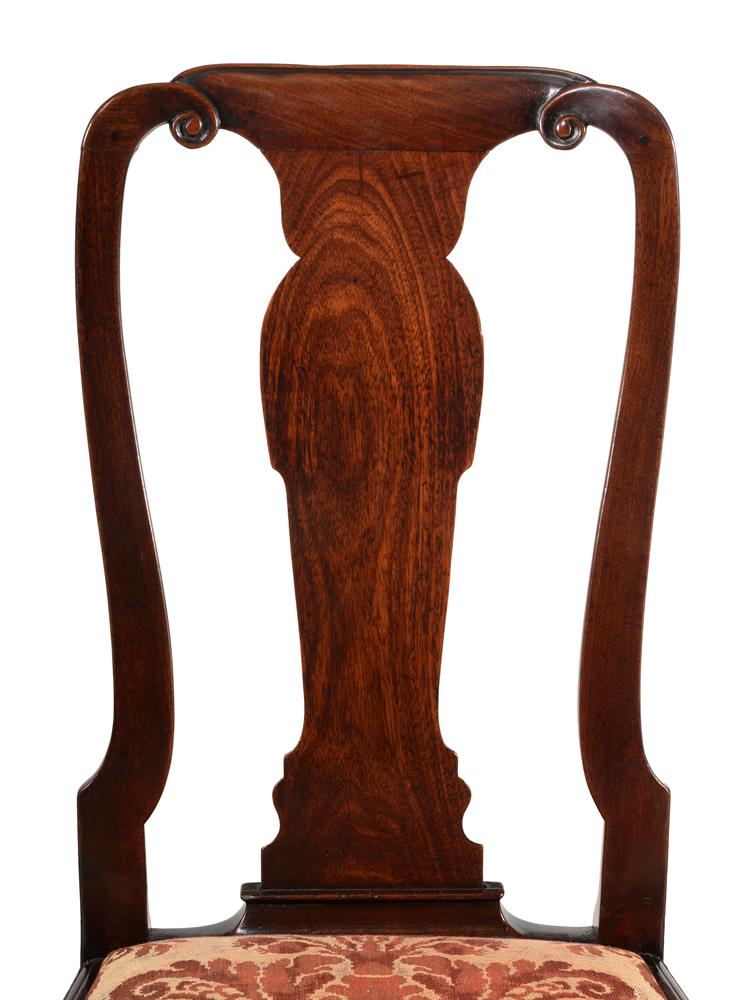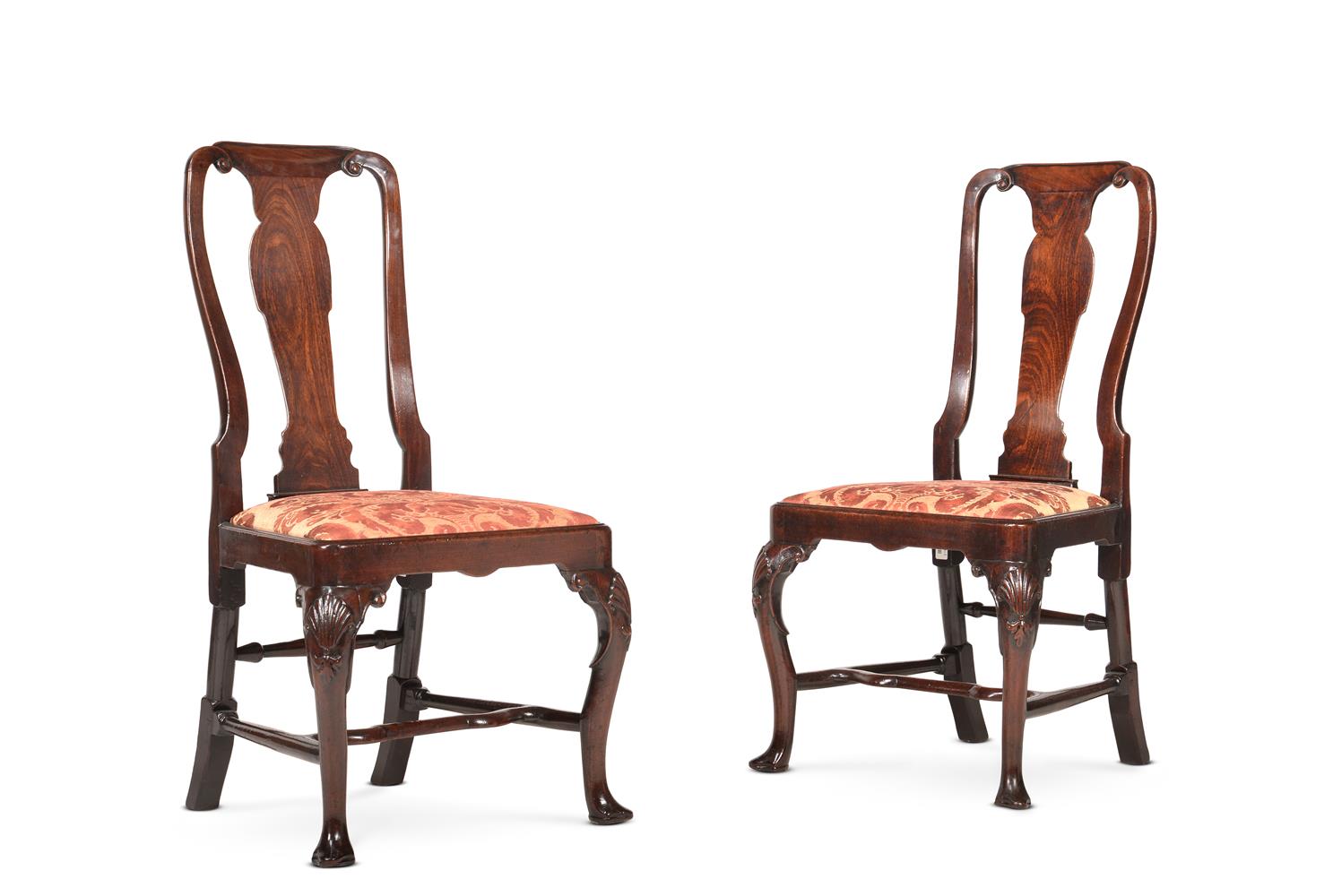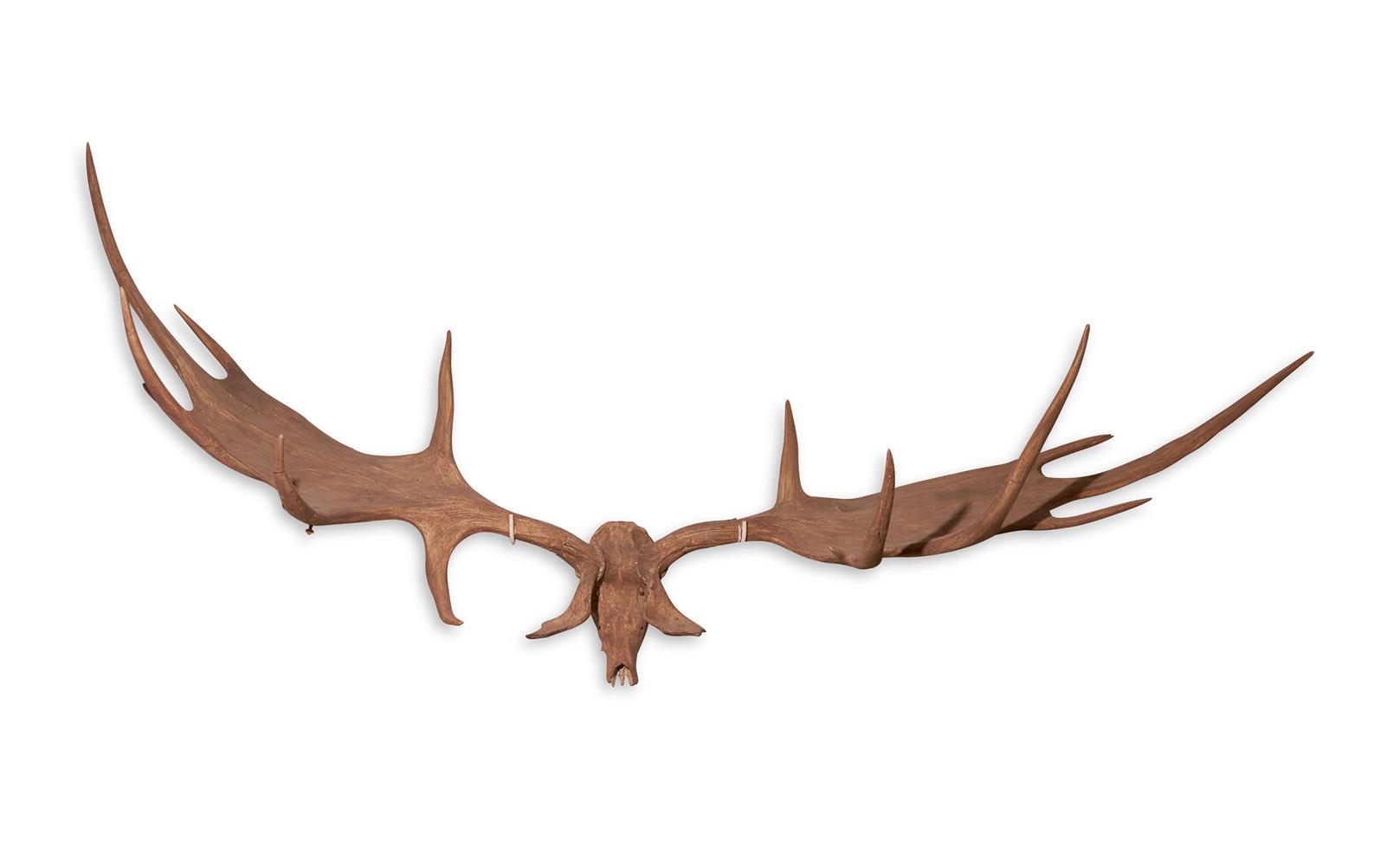A PAIR OF IRISH CELTIC SANDSTONE HEADS, modelled as a male and female, each carved with pronounced features in relief, the female with characteristic coiffure, each 36cm high Provenance: Formerly Moress, Inch Island, Co. Donegal Inch Island situated in the far north-west, at the neck of Lough Swilly, is home to a rich heritage of historic sites including Neolithic standing stones, bronze-age graves, iron-age forts, an early Christian sites and medieval castles. The area is renowned for the Flight of the Earls in 1607, which paved the way for the plantations and the arrival of Scottish and English settlers in the area. They replaced the Old Gaelic and Anglo-Norman families who had ruled for centuries. As the Plantation began, Inch was owned by Arthur Chichester, Lord Deputy of Ireland. He surrendered tracts of land to the King's Grantee, the Duke of Lennox, including thousands of acres in the Laggan and in Inishowen. Recent scholarship has shown that a large number of Celtic heads are in existence. While the discovery sites are not always known, and they are often moved from their original locations, these heads placement in Moress, a site of Gaelic families and later British settlers adds to their intrigue. As Celtic idols, the plantation settlers, as Presbyterians, would presumably have refrained from displaying the heads in their house. For the Celtic stone heads, the range in terms physiognomic features are quite broad but sculpting of hair as a characteristic is not uncommon. In particular in later Romano-Celtic versions, there are examples of quite elaborate coiffures. The deeply incised lines and detailed modelling were used to suggest individual strands of hair, as on the female head in this lot. Both heads are entities in and of themselves, with substantial necks, not attached to a torso but most likely set into wall similar to Celtic head in rear of the Church at Rostherne near Knutsford in Britain. The human head is central to Celtic iconography, appearing in many materials, stone, wood and metal. Their significance as objects of religious symbolism is similar to that of the cross for early Christians. A PAIR OF IRISH CELTIC SANDSTONE HEADS, modelled as a male and female, each carved with pronounced features in relief, the female with characteristic coiffure, each 36cm high Provenance: Formerly Moress, Inch Island, Co. Donegal Inch Island situated in the far north-west, at the neck of Lough Swilly, is home to a rich heritage of historic sites including Neolithic standing stones, bronze-age graves, iron-age forts, an early Christian sites and medieval castles. The area is renowned for the Flight of the Earls in 1607, which paved the way for the plantations and the arrival of Scottish and English settlers in the area. They replaced the Old Gaelic and Anglo-Norman families who had ruled for centuries. As the Plantation began, Inch was owned by Arthur Chichester, Lord Deputy of Ireland. He surrendered tracts of land to the King's Grantee, the Duke of Lennox, including thousands of acres in the Laggan and in Inishowen. Recent scholarship has shown that a large number of Celtic heads are in existence. While the discovery sites are not always known, and they are often moved from their original locations, these heads placement in Moress, a site of Gaelic families and later British settlers adds to their intrigue. As Celtic idols, the plantation settlers, as Presbyterians, would presumably have refrained from displaying the heads in their house. For the Celtic stone heads, the range in terms physiognomic features are quite broad but sculpting of hair as a characteristic is not uncommon. In particular in later Romano-Celtic versions, there are examples of quite elaborate coiffures. The deeply incised lines and detailed modelling were used to suggest individual strands of hair, as on the female head in this lot. Both heads are entities in and of themselves, with substantial necks, not attached to a torso but most likely set
A PAIR OF IRISH CELTIC SANDSTONE HEADS, modelled as a male and female, each carved with pronounced features in relief, the female with characteristic coiffure, each 36cm high Provenance: Formerly Moress, Inch Island, Co. Donegal Inch Island situated in the far north-west, at the neck of Lough Swilly, is home to a rich heritage of historic sites including Neolithic standing stones, bronze-age graves, iron-age forts, an early Christian sites and medieval castles. The area is renowned for the Flight of the Earls in 1607, which paved the way for the plantations and the arrival of Scottish and English settlers in the area. They replaced the Old Gaelic and Anglo-Norman families who had ruled for centuries. As the Plantation began, Inch was owned by Arthur Chichester, Lord Deputy of Ireland. He surrendered tracts of land to the King's Grantee, the Duke of Lennox, including thousands of acres in the Laggan and in Inishowen. Recent scholarship has shown that a large number of Celtic heads are in existence. While the discovery sites are not always known, and they are often moved from their original locations, these heads placement in Moress, a site of Gaelic families and later British settlers adds to their intrigue. As Celtic idols, the plantation settlers, as Presbyterians, would presumably have refrained from displaying the heads in their house. For the Celtic stone heads, the range in terms physiognomic features are quite broad but sculpting of hair as a characteristic is not uncommon. In particular in later Romano-Celtic versions, there are examples of quite elaborate coiffures. The deeply incised lines and detailed modelling were used to suggest individual strands of hair, as on the female head in this lot. Both heads are entities in and of themselves, with substantial necks, not attached to a torso but most likely set into wall similar to Celtic head in rear of the Church at Rostherne near Knutsford in Britain. The human head is central to Celtic iconography, appearing in many materials, stone, wood and metal. Their significance as objects of religious symbolism is similar to that of the cross for early Christians. A PAIR OF IRISH CELTIC SANDSTONE HEADS, modelled as a male and female, each carved with pronounced features in relief, the female with characteristic coiffure, each 36cm high Provenance: Formerly Moress, Inch Island, Co. Donegal Inch Island situated in the far north-west, at the neck of Lough Swilly, is home to a rich heritage of historic sites including Neolithic standing stones, bronze-age graves, iron-age forts, an early Christian sites and medieval castles. The area is renowned for the Flight of the Earls in 1607, which paved the way for the plantations and the arrival of Scottish and English settlers in the area. They replaced the Old Gaelic and Anglo-Norman families who had ruled for centuries. As the Plantation began, Inch was owned by Arthur Chichester, Lord Deputy of Ireland. He surrendered tracts of land to the King's Grantee, the Duke of Lennox, including thousands of acres in the Laggan and in Inishowen. Recent scholarship has shown that a large number of Celtic heads are in existence. While the discovery sites are not always known, and they are often moved from their original locations, these heads placement in Moress, a site of Gaelic families and later British settlers adds to their intrigue. As Celtic idols, the plantation settlers, as Presbyterians, would presumably have refrained from displaying the heads in their house. For the Celtic stone heads, the range in terms physiognomic features are quite broad but sculpting of hair as a characteristic is not uncommon. In particular in later Romano-Celtic versions, there are examples of quite elaborate coiffures. The deeply incised lines and detailed modelling were used to suggest individual strands of hair, as on the female head in this lot. Both heads are entities in and of themselves, with substantial necks, not attached to a torso but most likely set















Try LotSearch and its premium features for 7 days - without any costs!
Be notified automatically about new items in upcoming auctions.
Create an alert